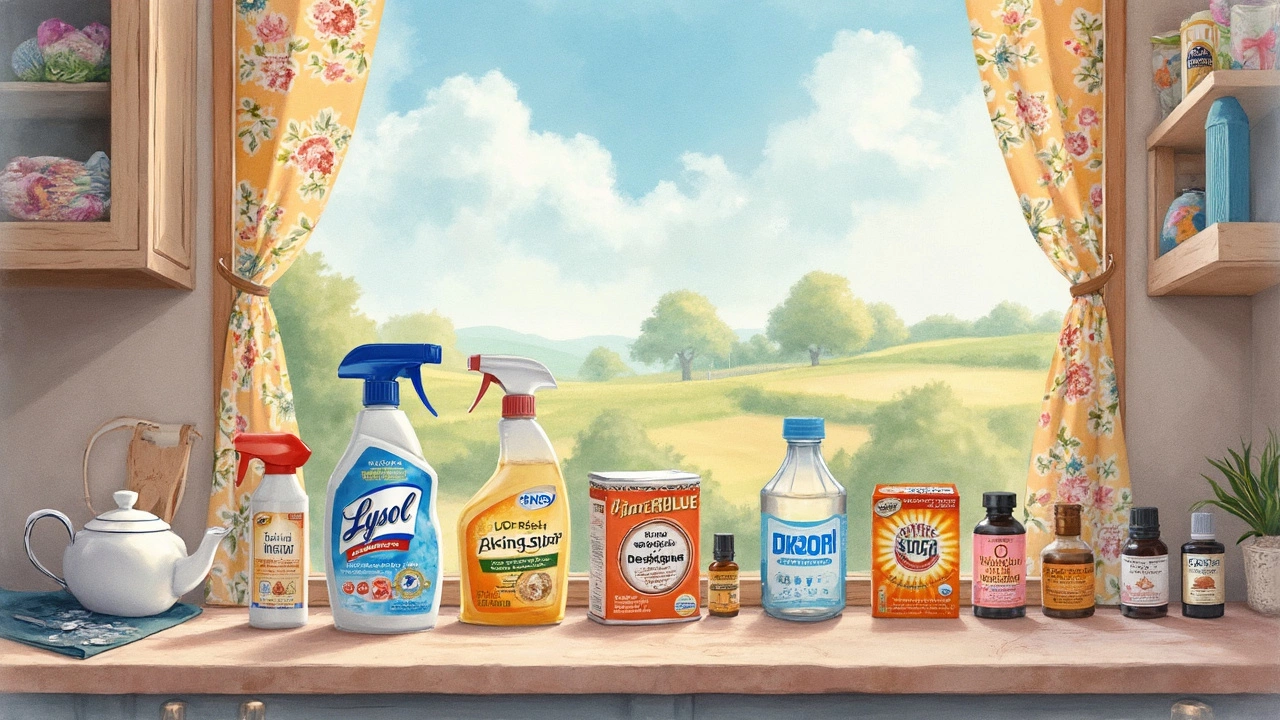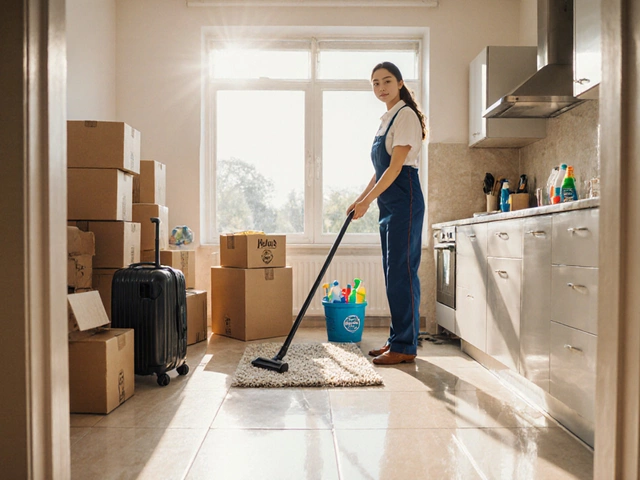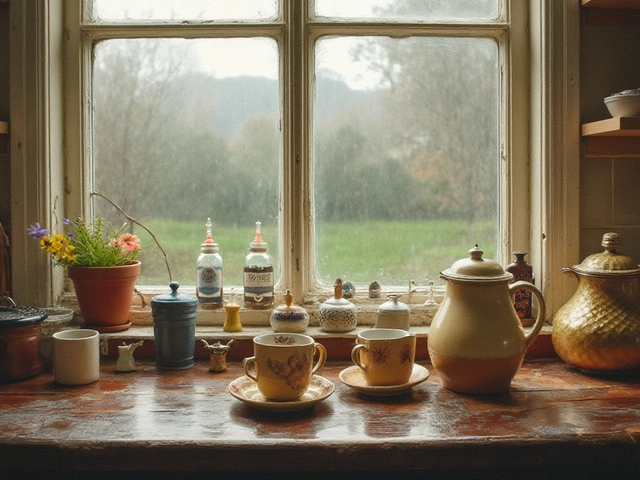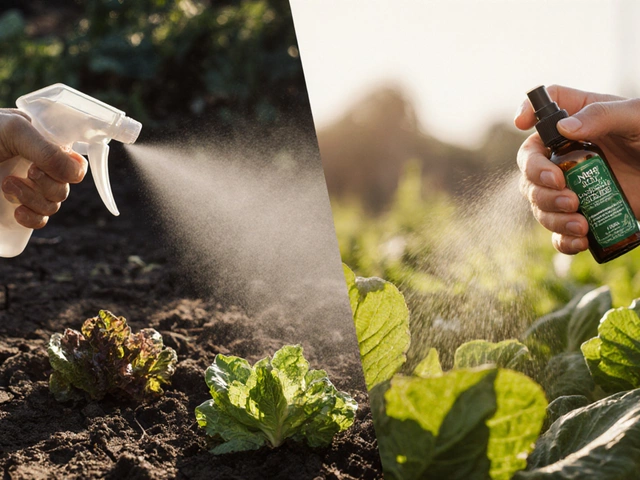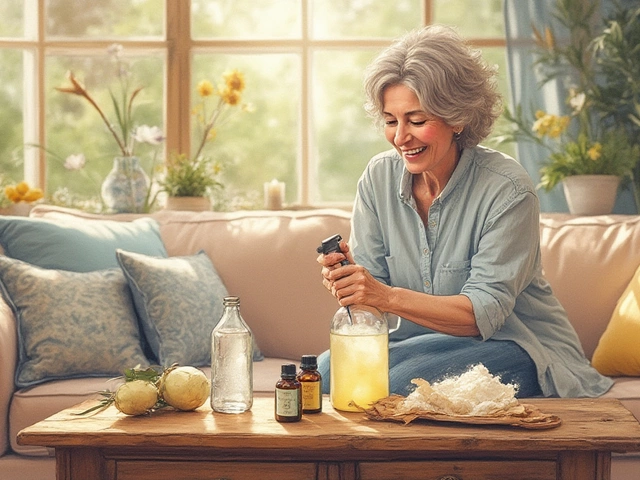Ever wondered if that bottle of Lysol under your sink is as planet-friendly as it claims to be? You're not alone! With all the buzz around sustainable living, it's natural to question the eco-friendliness of everyday products. So, let's break it down.
First things first—what actually makes a cleaning product eco-friendly? Generally, it involves ingredients that are biodegradable, non-toxic, and derived from renewable resources. Plus, the packaging should be recyclable or made from recycled materials. Sounds like a lot, right? But knowing these details can make a huge difference.
Now, let's talk Lysol. This well-known brand is famous for wiping out germs, but is it killing our planet too? We'll dive into what goes into Lysol products and how they affect the environment. And hey, if you're looking for greener alternatives, stick around. We've got some tips that'll prep you for a more sustainable cleaning routine without a complete lifestyle overhaul.
- What makes a product eco-friendly?
- Understanding Lysol's ingredients
- Environmental impact of Lysol products
- Alternatives to traditional Lysol cleaners
- Tips for more sustainable cleaning
What Makes a Product Eco-Friendly?
So, you're looking to go green with your cleaning supplies, but what exactly should you look for in an eco-friendly product?
First off, check the ingredients. Eco-friendly products commonly list plant-based ingredients that biodegrade easily. They avoid harsh chemicals like ammonia or chlorine bleach, which can be rough on the environment. For instance, instead of toxic surfactants, they might use gentle alternatives like cocamidopropyl betaine derived from coconut oil.
Ingredients Matter
A study from the Environmental Working Group found that over 53% of household cleaning products contain ingredients that can harm respiratory health. Choosing products with natural scents or essential oils means fewer nasties floating around in the air.
"Green cleaning products made with sustainable practices and renewable materials not only protect people but also our planet," says Jamie Green, director of the Natural Resources Defense Council (NRDC).
Packaging Counts
Don’t forget the packaging! An eco-friendly product usually keeps it simple with recyclable or biodegradable materials. Look for bottles made from recycled plastic or paper cartons.
Certifications to Trust
If you're overwhelmed in the cleaning aisle, certifications can guide your choice. Labels like the EPA's Safer Choice or Ecologo can assure you that the product meets strict environmental standards.
- Safer Choice: This label focuses on the environmental and human health aspects.
- Ecologo: Products with this certification have undergone rigorous testing to ensure they are sustainable and less impactful on our planet.
Finally, statistics show that using green products doesn’t mean compromising on efficiency. Many eco-friendly brands are proven to fight grime just as effectively as their chemical-heavy counterparts. So, it's a win-win for your home and the planet!
Understanding Lysol's Ingredients
So, what's actually in that bottle of Lysol that works hard to keep your home squeaky clean? Understanding a product's ingredients is crucial if you're aiming for a more eco-friendly cleaning routine.
Breaking Down the Common Ingredients
Lysol's magic comes from a mix of chemicals designed to kill bacteria and viruses. One of the main ingredients you'll find is alkyl dimethyl benzyl ammonium chloride, a powerful disinfectant that effectively targets germs. However, it's also known to be an irritant and not particularly kind to the environment if not used wisely.
Frequently, these products contain various forms of alcohol, like ethanol or isopropanol, which aid in fast drying and disinfecting. While these are generally safe in small amounts, they’re not the most sustainable options when looked at through a green lens.
Balancing Cleanliness and Sustainability
A recent article from the Environmental Science Journal notes,
"While brands such as Lysol are highly effective in their germ-fighting capabilities, consumers must consider the potential long-term impacts of regularly using synthetic chemical-based cleaners on both health and environment."
Lysol does make efforts to manage its environmental impact, like offering products in recyclable packaging and partnering with green initiatives. But still, reading the label before buying is a good habit to make sure you're picking products that align with your values.
Useful Tip: Reading Ingredients
Here's a quick tip: when shopping for cleaning products, try to avoid ingredients that list "fragrance," as this often includes undisclosed chemicals. Aim for products clearly stating their ingredients, making it easier to understand what you're bringing into your home.
Curious about how Lysol measures up in terms of environmental safety? Many look for products certified by trustworthy organizations like EPA's Safer Choice or EcoLogo. While Lysol isn't always on these lists, it doesn't mean you have to give up effective cleaning for sustainability entirely—more on that later.
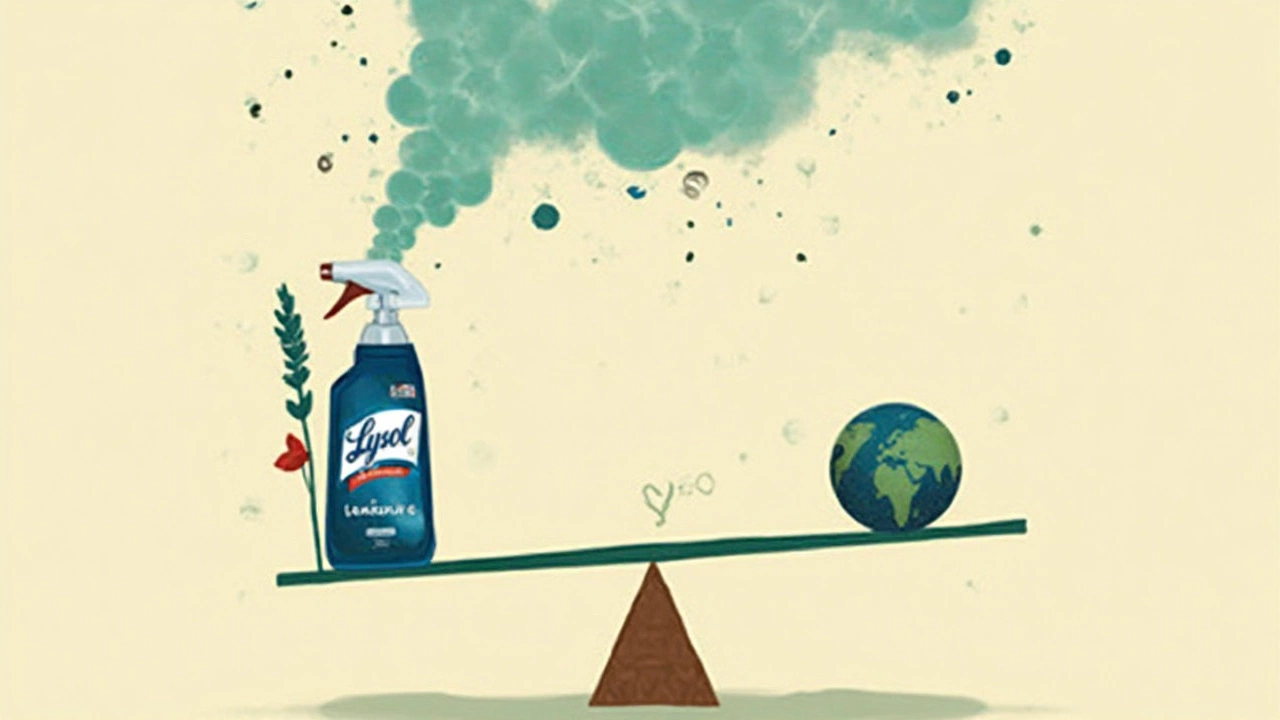
Environmental Impact of Lysol Products
Let's get real about the environmental impact of those trusty Lysol products. Sure, they do wonders on the surfaces, but what about the planet? It's easy to overlook, but understanding what happens when these products wash down the drain is crucial.
Most traditional cleaners, including some Lysol variants, often contain certain chemicals and compounds that are far from eco-friendly. For instance, quaternary ammonium compounds—found in a bunch of disinfectants—can be tough on aquatic life once they hit water systems. Not exactly what you'd want to imagine happening after the cleaning's done, right?
Digging Into Ingredients
So, what's in the mix? Besides those quats, other ingredients like artificial fragrances and dyes aren't exactly biodegradable, which can add up over time to form a bigger environmental footprint. This doesn't mean Lysol's doing it all wrong, but it does highlight some areas where improvements could be made.
"We must acknowledge that while disinfection is essential for health, the environmental repercussions of persistent antimicrobial usage cannot be ignored," notes Dr. Emma Grady, a microbiologist focused on sustainable cleaning.
Packaging and Disposal
Think about that plastic spray bottle and the packaging. How often do you finish a bottle and just toss it in the trash? If it's not recyclable or reused, it's off to the landfill where it'll sit for centuries. That’s a huge part of the pollution problem, even if people don't always see it happening.
| Product Feature | Eco-Friendly Score |
|---|---|
| Biodegradability | 5/10 |
| Recyclable Packaging | 6/10 |
| Non-Toxic Ingredients | 4/10 |
So yeah, Lysol's great for scrubbing grime, but some of the environmental aspects could use a redo. The good news? Many companies are catching on, offering more eco-friendly cleaning solutions with fewer environmental downsides. So, keep an eye out for those greener labels next time you're in the cleaning aisle.
Alternatives to Traditional Lysol Cleaners
If you're looking to make a switch from Lysol to something a bit more planet-friendly, you're in luck. These days, the market is full of eco-friendly cleaning options that promise to keep your home sparkling without harming Mother Earth.
1. Vinegar and Baking Soda
Good ol' vinegar and baking soda might just be the dynamite duo you've been overlooking. Mix a bit of vinegar with water in a spray bottle for a multi-purpose cleaner that's tough on grime. Sprinkle some baking soda on tougher spots and let it fizz its way to cleanliness. Bonus? It’s dirt cheap!
2. Castile Soap
This one’s a fan favorite in the green products community. Castile soap is derived from vegetable oils and can tackle everything from countertops to dishwashing. Mix it with water and maybe a few drops of essential oil to add a personal touch.
3. Essential Oils
Looking to set the mood while you clean? Essential oils like tea tree, lavender, or lemon not only smell incredible but also have antibacterial properties. Add a few drops to your vinegar solution for a powerful (and pleasant-smelling) cleanser.
4. Commercial Eco-Friendly Cleaners
If you’d rather skip the DIY, no worries. There are plenty of commercial sustainable cleaning brands out there. Brands like Method, Seventh Generation, and Ecover offer a variety of products that are non-toxic, biodegradable, and packed in recycled materials. These options make it super easy to make the switch.
5. Reusable Cleaning Cloths
Don't forget about what you're applying these green products with! Swap out paper towels for microfiber or reusable cloths. Not only do they work better, but you're also reducing waste in the process.
| Brand | Eco-Friendliness | Average Cost |
|---|---|---|
| Vinegar & Baking Soda | High | $5 |
| Castile Soap | Medium | $10 |
| Method | High | $4 |
The bottom line? You don’t have to stick to traditional Lysol products if you're aiming for sustainable living. With just a little tweak here and there, you’ll be cleaning your home in an eco-friendly way in no time!
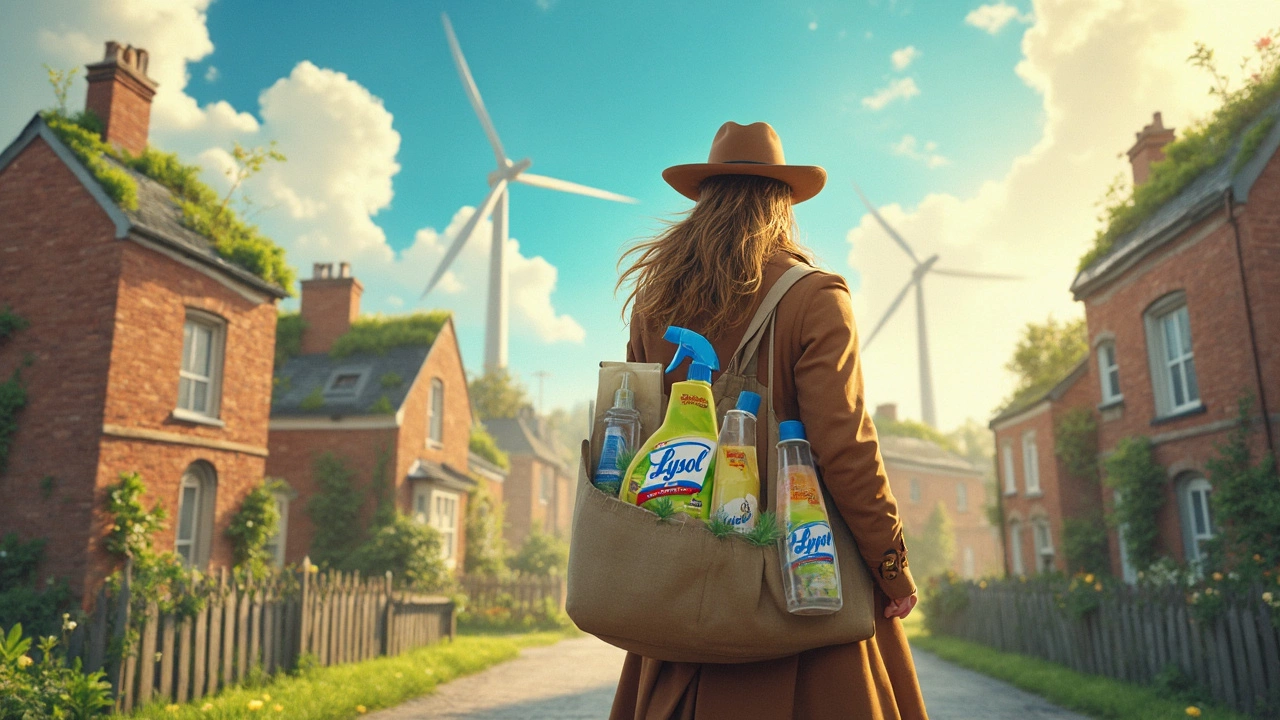
Tips for More Sustainable Cleaning
Looking to reduce your carbon footprint with your cleaning routine? Here are some laid-back, easy-to-implement tips that can make a significant difference:
1. Go for Green Ingredients
Aim to choose cleaning products made from natural, biodegradable ingredients. These clean effectively without harming the planet. Check labels for plant-based components and avoid harsh chemicals.
2. DIY Cleaning Solutions
Why buy when you can DIY? A mix of vinegar, water, and a dash of lemon juice can tackle most household surfaces. Plus, who doesn't love knowing exactly what's in their cleaner?
3. Reusable Cleaning Tools
Single-use items are convenient, but they pile up landfills pretty quickly. Consider swapping disposable wipes for washable cloths or microfiber towels. They're just as good, if not better!
4. Recycle Right
Many cleaning product containers are recyclable, but they need to be rinsed out before hitting the bin. Clean out those Lysol bottles to give them a second life.
5. Look for Certifications
Check for eco-labels like 'Green Seal' or the EPA’s 'Safer Choice' on products. These labels mean they're better for you and the environment.
Sustainable Stats to Ponder
| Product Type | Waste Reduction |
|---|---|
| Reusable cloths | Save up to 80% more waste compared to disposables! |
| DIY cleaners | Cut cost and packaging waste by about 50%. |
Implementing just a few of these changes can help reduce your eco-footprint significantly. Remember, being a little green goes a long way!
